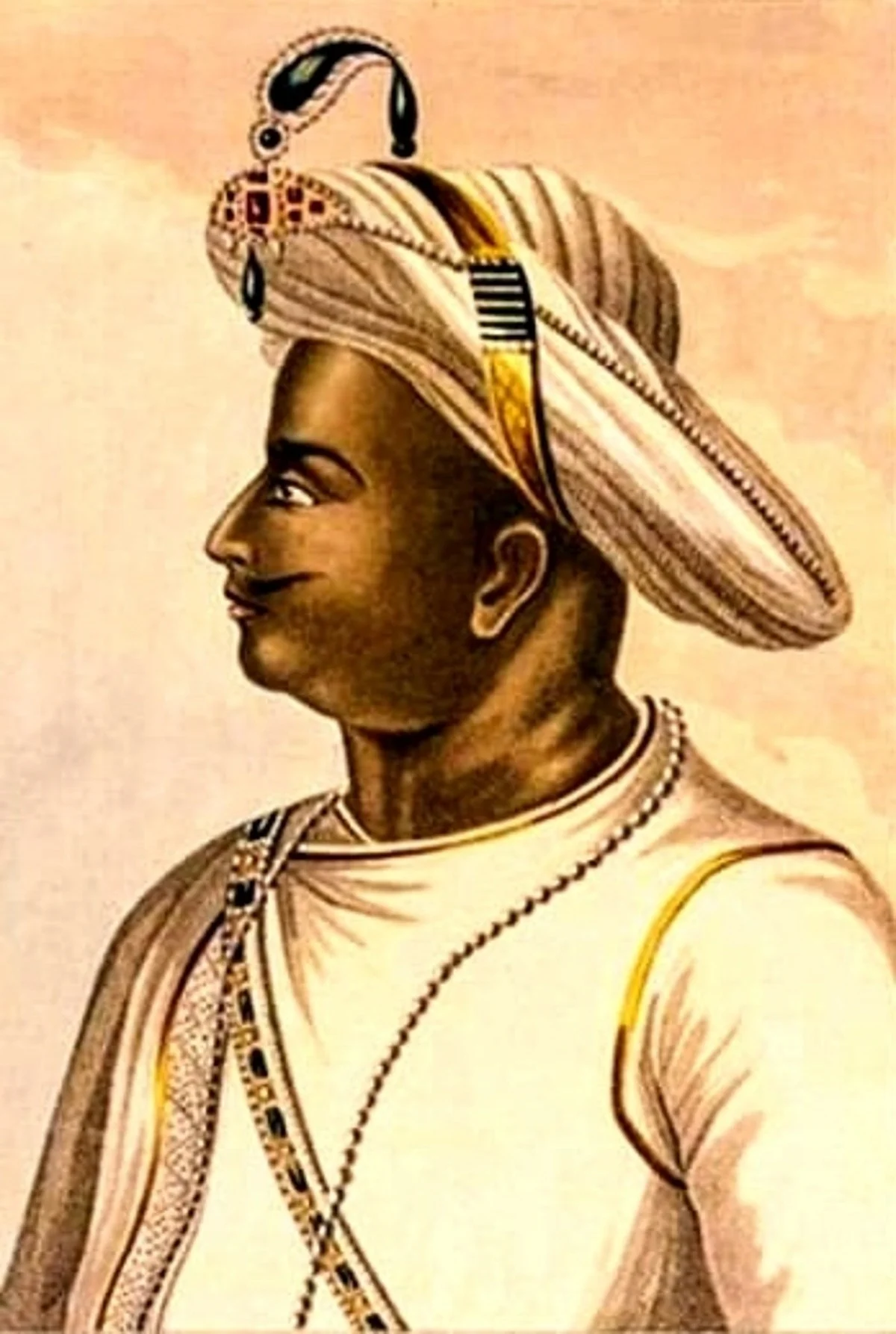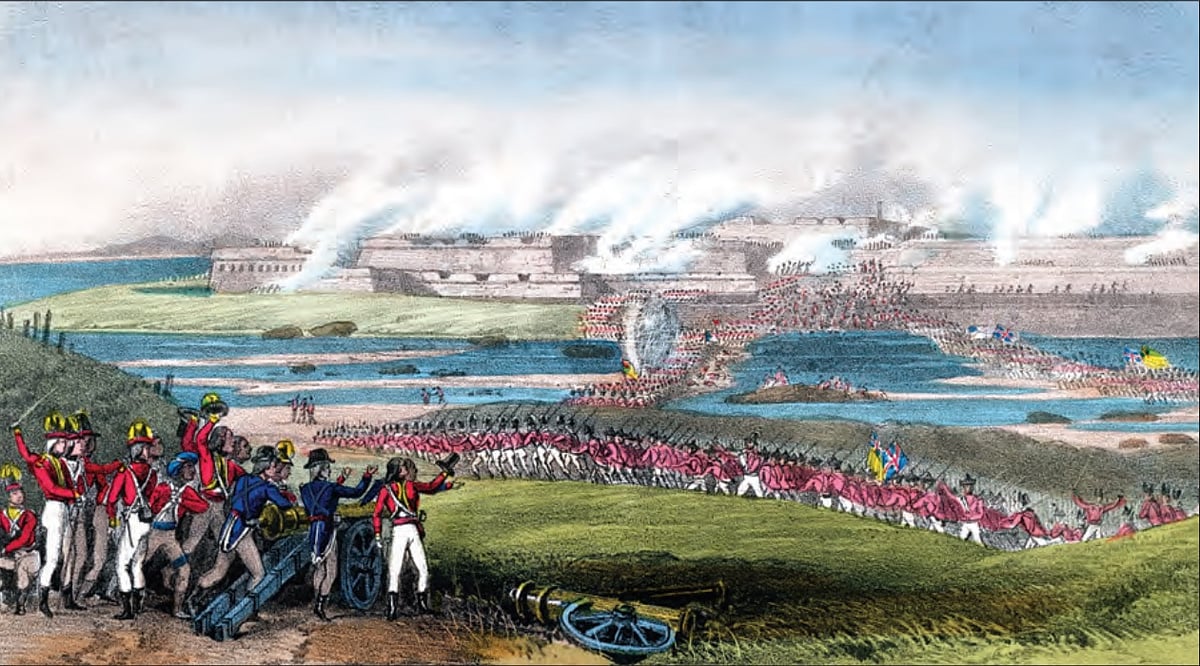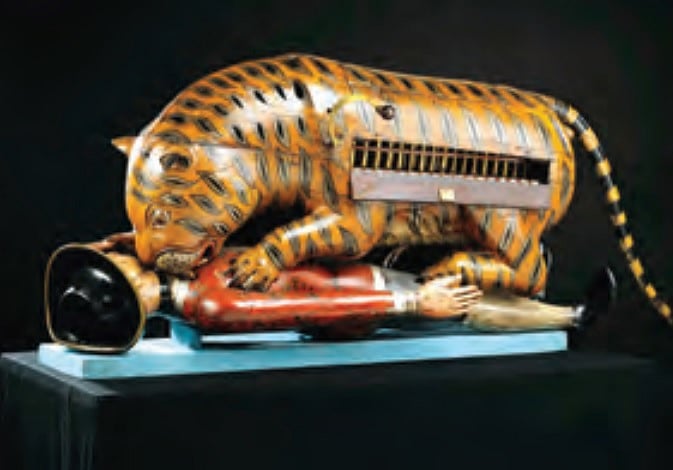Who Is Afraid of Tipu’s Legacy?
Should Tipu Sultan remain a polarising figure in elections 123 years after he was killed in battle? However, the project to demonise Tipu suits the cynical purpose of BJP/RSS—to polarise voters

In 2012, when he parted ways with the BJP, former Karnataka chief minister and BJP leader B.S. Yeddiurappa donned a headgear and waved a sword to invoke memories of—and possibly affect some spiritual kinship with—Tipu Sultan, who ruled over Mysore between 1750 and 1799.
Four years later, back in the BJP fold, he opposed moves to celebrate Tipu Jayanthi. Just like that, but then those ironies never cease in political life.
With assembly elections due in the state next year, renewed attempts are being made to vilify Tipu Sultan as a Muslim bigot. “We will vandalise the statue of Tipu Sultan if it comes up anywhere in Karnataka,” declared Pramod Muthalik of the militant Sri Rama Sene, on 11 November, responding to Congress MLA Tanvir Sait’s promise of erecting a 100 feet statue of the erstwhile ruler.
Two days later, Addanda Cariappa, director of the theatre repertory Rangayana, released a book titled Tipu Nijakanasugalu, which claims to reveal Tipu’s ‘true nature’. Speaking at the book release event, rightwing author S.L. Bhyrappa said: “Those who valorise Tipu Sultan despite all the available evidence of his true nature cannot possibly care much for A.P.J. Abdul Kalam.” Expect more vitriol on similar lines as the election draws nearer.
The vilification and/ or valorisation of the Mysore ruler is hardly new. British writers and reports of the late 19th century painted him as a ruthless bigot and tyrant. His reprisals against the Kodavas in Coorg and Christians in coastal Karnataka were vividly recalled to underscore the urgency to subjugate Mysore.
That was, of course, the time when Tipu was fighting the East India Company, who he believed were invaders and impostors. This is borne out by his letters to the Marathas and the Nizam, who eventually went with the East India Company against him.
Some historians agree that Tipu was ruthless in putting down people who sided with the Company and waged a guerrilla warfare against him. On the other hand, there is ample evidence that when he was killed in 1799, his death was lamented in Kannada folk songs. Some historians vouch that no other ruler in the state has been memorialised in folklore in that manner.
Much has been written about Tipu Sultan’s secular legacy. Some of his key ministers were Brahmins but the official languages in his court were Persian, Kannada and Marathi. Dasara celebrations continued under his rule with a member of the Wodeyar royal family presiding.
Thousands of Kannada plays chronicle his rule and personal bravery. Amar Chitra Katha comics were highly flattering and, even more remarkably, an RSS publication of 1970, in its ‘Bharat Bharati’ series, lauded his contributions.
As recently as 2017, a memorial was inaugurated in neighbouring Tamil Nadu, ostensibly to fulfil a desire expressed by former chief minister J. Jayalalithaa.
Some 2,000 books from Tipu’s personal library were dispatched by the Company to various places, many of them back to England though some are still available in the Asiatic Society libraries.
The books provide an insight into his range of interests, the mind of the slain ruler, who continues to be grudgingly admired for modernising the military, for introducing rockets and missiles when they were unknown in the rest of the country and for centralising the bureaucracy.
He was among the first rulers to impose prohibition on health grounds. He was also among the rare rulers who confiscated the properties of mutts and distributed them generously among his poorer subjects.

Much of the colonial writing targeting Tipu can be traced to the period when he was fighting with the East India Company. When an overwhelming military force led by the British, but also comprising the Marathas and forces from Hyderabad and the kingdom of Travancore, got the better of him in the final Anglo-Mysore war in 1799, General Harris is said to have exulted: “India is now ours.”
The Victoria and Albert Museum in London has a separate wing dedicated to the ‘Imperial Courts of South India’. Among other fascinating objet d’art, it showcases Tipu’s tiger, a mechanical toy that appears to be mauling a prostrate European. Tiger motifs are all too common in Tipu artefacts, as a sort of easy shorthand invocation of ‘The Tiger of Mysore’.
Sectarian attacks on Tipu Sultan are expected to intensify in Karnataka in the run-up to the election. The state BJP government is doing its damnedest to polarise the state on communal lines. Its decision to ban the hijab in government schools, a ban on the sale of halal meat, the boycott of Muslim fruit and vegetable sellers have all made headlines in recent months, as have the increasing frequency of communal clashes in coastal Karnataka. There are also reports of right-wing groups vandalising mosques on Ram Navami and the attacks on Muslim vendors.
But must Tipu Sultan remain a polarising figure in elections 123 years after he was killed in battle? Historian Kate Brittlebank, in her book on Tipu Sultan’s life titled Tiger: The Life of Tipu Sultan, wrote, ‘[his] generosity to temples, Sufi dargahs and mosques, as well as the great [mutt] at Sringeri, are well documented, primarily through inscriptions and institutional records.’ Tipu’s in’am register, she writes, held at the Kozhikode Archives in Kerala show 67 grants of rent-free land authorised to temples as well as mosques.
The RSS and the BJP have systematically vilified Tipu Sultan. When Sanjay Khan made a tele-serial based on Bhagwan Gidwani’s book, The Sword of Tipu Sultan, there was an uproar. When superstar Rajinikanth was offered the role of Tipu in a film, they warned him against accepting it.
Clearly, it doesn’t suit their political design to acknowledge that various historians and authors have pointed out that much of the unfavourable writing on Tipu Sultan was by colonialist writers close to the East India Company, Lord Cornwallis and Lord Wellesley, who had reasons to malign him.

What suits the BJP’s polarising political design in Karnataka is to underline Tipu’s military expansionist ideas, his tiffs with the Marathas and acts of violence against the Kodavas, which are also documented. But Tipu is not two-dimensional, and talking about his alleged injustices in the distant past, based on dubious history, is merely their way to foment a hatred of Muslims living in the state.
Across the country, right-wing groups have laid claims to various mosques, allegedly built upon the remains of Hindu temples. This has also happened in Karnataka at the Juma Masjid in Malali, Mangalore. In the cynical communal project of the BJP and its ideological mentor, the RSS, the validity of these claims matters less than the way in which they can be weaponised to polarise voters.
Follow us on: Facebook, Twitter, Google News, Instagram
Join our official telegram channel (@nationalherald) and stay updated with the latest headlines
